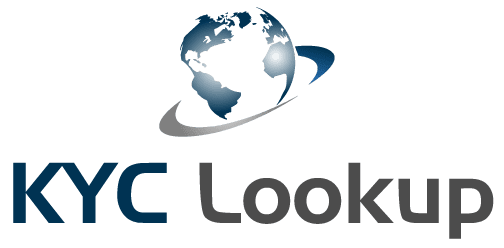12 Apr Understanding the Fundamentals of Money Laundering
Money laundering is the illicit process of transforming the profits from criminal activities into “clean” money that can be used in legitimate business operations without raising suspicion. It involves trillions of dollars worldwide each year, significantly impacting global economies. Criminal enterprises, such as drug smuggling operations, often need to conceal large amounts of cash to avoid legal scrutiny. They use various methods to launder money, obscuring its illegal origins by integrating it into the legitimate financial system, such as through banks or businesses. Understanding and combating money laundering is crucial for maintaining the integrity of financial systems and preventing the proliferation of criminal activities.
Decoding the money laundering process
The process of money laundering typically involves three stages: placement, layering, and integration. Here’s an overview of each stage along with examples:
- Placement: This is the initial stage where the illegally obtained money is introduced into the financial system. Criminals use various methods to make the money less conspicuous, such as breaking up large amounts into smaller sums and depositing them into bank accounts, purchasing monetary instruments like checks or money orders, or investing in businesses with high cash turnover.
- Example: A drug dealer opens fast-food restaurants to mix illegal earnings with legitimate business income or uses shell companies in tax havens to hide the origin of the funds.
- Layering: In this stage, the money is moved through a series of complex financial transactions to obscure its origin. This can involve transferring money between multiple accounts, converting it into different currencies, or investing in financial instruments or assets.
- Example: Money launderers may use chain-hopping (converting one cryptocurrency into another), mixing (blending various transactions across several exchanges), or cycling (making deposits and purchases with cryptocurrency and then depositing the proceeds into a different bank account).
- Integration: The final stage involves reintegrating the laundered money into the legitimate economy, making it appear as if it has been legally earned. This can be done by investing in real estate, luxury assets, or business ventures, or by creating fake invoices or contracts to justify the source of the funds.
- Example: Laundered money is used to buy high-priced assets like artwork, jewellery, cars, and real estate, or overinflated invoices are used to gain ‘clean’ money off the top.
Efficient anti-money laundering (AML) solutions and compliance with AML regulations are crucial for detecting and preventing money laundering activities.
Disguising Illegally Obtained Funds: Common Money Laundering Methods
Money laundering involves various schemes to conceal the origins of illegally obtained funds. Some common methods include:
- Smurfing (Structuring): This involves breaking down large sums of money into smaller amounts and depositing them into multiple accounts to avoid detection by financial institutions.
- Cash-Intensive Businesses: Criminals use businesses that handle large amounts of cash, such as restaurants or car washes, to mix illicit funds with legitimate income, making it difficult to trace the origin of the money.
- Trade-Based Laundering: This technique involves manipulating trade transactions, such as over- or under-invoicing goods and services, to move money across borders and make it appear as legitimate business profits.
- Real Estate Laundering: Criminals invest illicit funds in real estate properties, which can later be sold to “clean” the money and integrate it into the legitimate financial system.
- Shell Companies and Trusts: These entities are used to create complexity and obscure the true ownership of assets, making it difficult for authorities to trace the source of the funds.
- Casino and Gambling Laundering: Criminals use casinos and online gambling platforms to convert illicit funds into chips or credits, then cash out with apparent winnings.
- Bulk Cash Smuggling: This involves physically transporting large quantities of cash across borders to evade detection by financial institutions and regulatory authorities.
Impact of Money Laundering
Money laundering has significant economic and social consequences. It undermines the integrity of financial markets, distorts competition, and facilitates corruption and crime. Economically, money laundering leads to loss of revenue, economic distortion, and instability. It can result in the loss of control over economic policy and undermine the legitimate private sector. Socially, money laundering allows criminal activities such as drug trafficking and human trafficking to expand, transferring economic power from the market, government, and citizens to criminals. In extreme cases, it can lead to the takeover of legitimate government by criminal organisations. The global nature of money laundering, estimated to be 2-5% of global GDP, requires international cooperation to effectively combat its impacts (Tookitaki, OJP).
Anti-Money Laundering Measures
Anti-money laundering (AML) measures are crucial laws and procedures aimed at preventing criminals from disguising illegal funds as legitimate income. Financial institutions play a key role by monitoring transactions, reporting suspicious activities, and conducting customer due diligence. Governments and regulatory bodies establish and enforce AML frameworks, emphasising the importance of international cooperation, especially for cross-border transactions. The use of advanced tools like machine learning for tracking illicit flows is encouraged. Effective AML measures are essential for financial stability, crime prevention, and maintaining the integrity of the global financial system.
Conclusion
In conclusion, money laundering is a global issue that significantly impacts economic stability, financial integrity, and political development. It is crucial for individuals, financial institutions, and governments to remain vigilant and aware of money laundering techniques and their consequences. Improving anti-money laundering regulations and enhancing international cooperation are essential steps in combating this menace. By increasing awareness and implementing effective measures, we can protect the global financial system and promote sustainable development. For professionals looking to enhance their AML skills and stay compliant with regulatory requirements, KYC Lookup offers a range of online courses and resources. It is a collective responsibility to ensure a transparent and secure financial environment for all.



No Comments